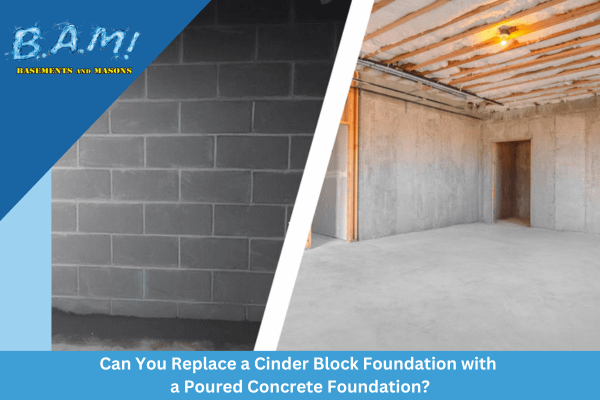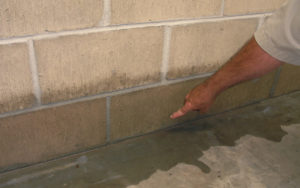Getting My Best Basement Waterproofing To Work
Getting My Best Basement Waterproofing To Work
Blog Article
The Basic Principles Of Best Basement Waterproofing
Table of ContentsThe Main Principles Of Best Basement Waterproofing The smart Trick of Best Basement Waterproofing That Nobody is Talking AboutThe Best Strategy To Use For Best Basement WaterproofingTop Guidelines Of Best Basement Waterproofing10 Easy Facts About Best Basement Waterproofing Described
AdvantaClean's experienced specialists and service technicians will find the water source. If wall surface or piece fractures are existing, we will certainly inject polyurethane and epoxies right into the cracks and seal the compromise, avoiding more wetness from entering.
If there's condensation on the outside of the aluminum foil, you have high humidity in your cellar. If the aluminum foil has condensation on the inside surface area (next to the wall), the dirt around your residence might be normally damp from a high water table or inadequate dirt drain.
You can waterproof just your interior wall surfaces, which might resolve the problem. Once they dry, they adhere completely to concrete and stonework walls.
Best Basement Waterproofing - An Overview
Swirl the brush at the last of application to provide the wall an attractive, finished appearance. Concrete waterproof finishings can't be related to previously painted surfaces; inspect the label. A 5-gallon container costs about $60. Understood as densifiers, they are appropriate just for wall surfaces that have not been painted or sealed.
But you clean, roll, or spray it on much more thickly one gallon covers just 75 square feet, not the 300 square feet regular with basic paint. Water-proof paint is great for DIY application. You can apply it over repainted surface areas, and paint over it once it's cured (one gallon prices $37).
It can cost $10,000 to $15,000, depending on the job required. Outside waterproofing includes excavating all around the residence to the full depth of the foundation walls, after that setting up a water resistant layer or membrane covered by water drainage panels.
We have actually all been captured in a tornado without umbrella or raincoat (Best Basement Waterproofing). And it's constantly a recipe for catastrophe: everything's wet, your hairdo is spoiled, and points are obtaining stuffy. A cellar without waterproofing is kind of like that. Minus the wrecked hairdo component. Your basement doesn't wish to go through a rainstorm without proper security simply as high as you don't wish to.
Little Known Questions About Best Basement Waterproofing.
However if you've done your research study, you 'd recognize there are two types of waterproofing: interior and outside. It can get perplexing what they both mean, which one's a far better investment, and what will really keep the water out. Don't fret, we assembled this blog to easily define both methods for you and go over the benefits and drawbacks of each.
Exterior waterproofing is a waterproofing method that includes sealing your home from the outside. It's kind of like a moat around a castle. It includes excavating a trench around your visit our website entire house to the structure (concerning 8 to 10 feet down). The structure wall surfaces are then cleaned, sealed, and covered with a water resistant membrane or sealant.

Unknown Facts About Best Basement Waterproofing
It's an extra involved process that calls for digging up your lawn, which is costly and taxing. Exterior waterproofing includes getting rid of whatever bordering your home, including porches, driveways, walkways, landscaping, air conditioner systems, decks, and so forth. If any one of the work was done improperly and water is still entering your basement, there isn't much you can do to fix or repair it.
Inside cellar waterproofing involves waterproofing from the within. Any kind of water that leaks right into your cellar is redirected before it touches your floor.
It's a reliable approach to water-proof your basement. The downside of interior basement waterproofing mainly has to do with the installation process.
Best Basement Waterproofing Things To Know Before You Get This
To conclude, exterior and indoor basement waterproofing are both efficient approaches of shielding your home from water damage. Exterior waterproofing creates an obstacle that prevents water from entering your home, while indoor waterproofing redirects find more water that does enter your home. And it is essential to note that outside waterproofing is a pricey and turbulent installment process when compared to interior waterproofing.
Whichever method you choose, make sure you pick a reliable and reliable service provider for the work. If you have any kind of inquiries about cellar waterproofing, please reach out to us.
You can fill out our form here, start a chat in the lower right-hand corner, or call us at 1-800-827-0702.
Report this page